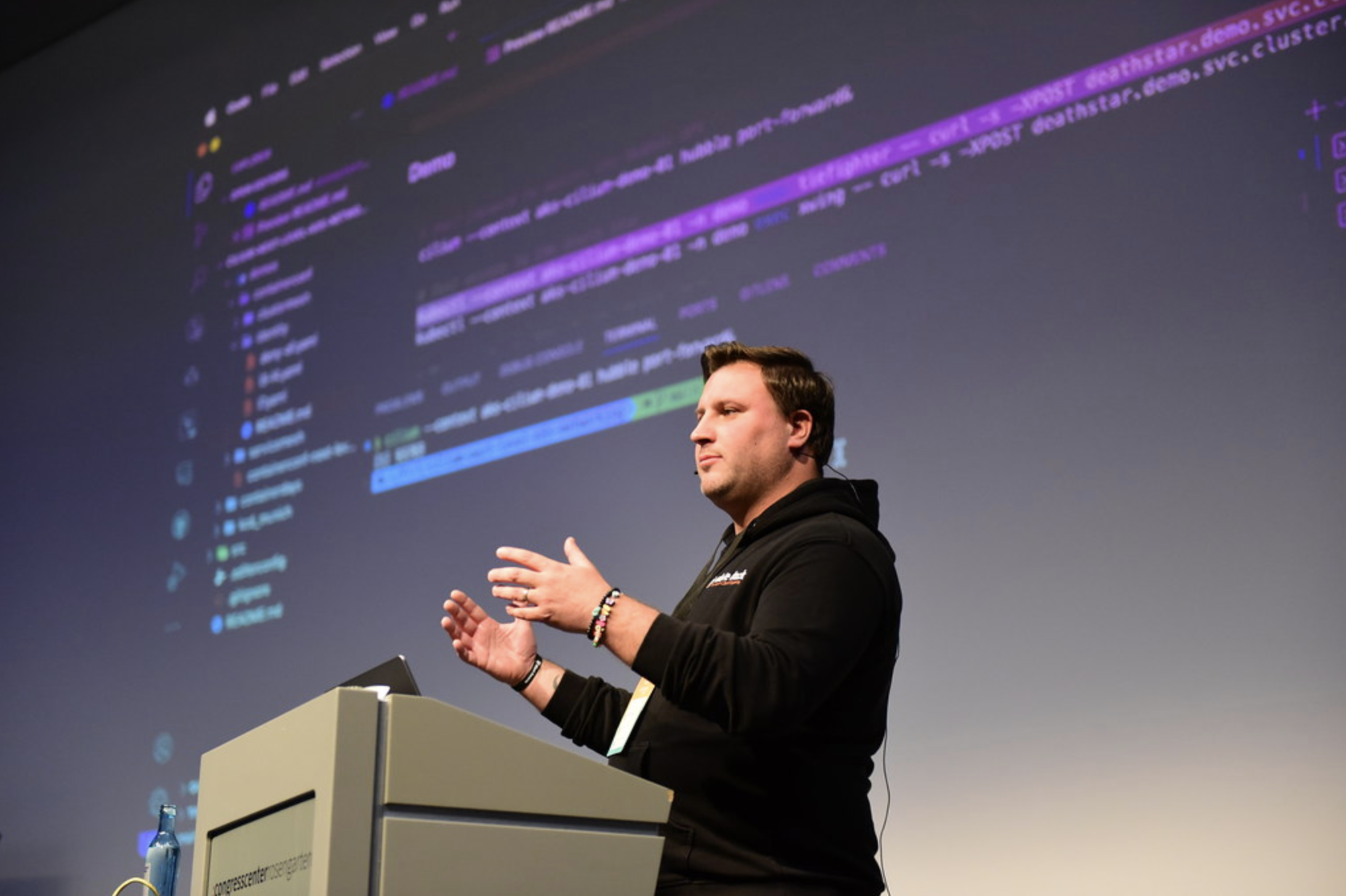Enable Node autoprovisioning (NAP) on an existing AKS cluster
 Philip Welz
Philip Welz
Finally announced beginning of December 2023, node autoprovisioning (NAP) enables the use of Karpenter on your AKS cluster. Usually there are functionality drawbacks when features go in public preview. One of those limitations are that NAP can only be enabled on new clusters.
Due to latest improvements from the Engineering Team that is working on Karpenter at Microsoft, NAP can now be enabled on existing clusters. Follow along to see how your cluster can be migrated to NAP.
Notice: The only supported network configuration to enable NAP on an existing cluster is Azure Overlay with Cilium data plane.
Requirements
As mentioned already NAP is currently public preview, so you need to have Azure CLI with the aks-preview extension 0.5.170 or later installed.
You can verify if you have the extension installed or if you have to correct version with the following commands:
# get installed version of aks-preview:
az extension list | grep aks-preview -A3 -B 3
# if you dont have the extension installed, you can install it with:
az extension install --name aks-preview
# update the extension if dont at least match 0.5.170:
az extension update --name aks-preview
After that, we need to register the NodeAutoProvisioningPreview feature flag:
# register the NodeAutoProvisioningPreview feature flag
az feature register \
--namespace "Microsoft.ContainerService" \
--name "NodeAutoProvisioningPreview"
# verify the registration status
az feature show \
--namespace "Microsoft.ContainerService" \
--name "NodeAutoProvisioningPreview"
# re-register the Microsoft.ContainerService resource provider
az provider register --namespace Microsoft.ContainerService
Enable Node autoprovision
To enable NAP on an existing Cluster, simply run this command:
# export this variables as we will will use them more often
CLUSTER_NAME=aks-nap-test-1
CLUSTER_RG=rg-nap-test
# update existing cluster and enable NAP
az aks update \
--name $CLUSTER_NAME \
--resource-group $CLUSTER_RG \
--node-provisioning-mode Auto
After a the update command is successfully finished, we can inspect the Kubernetes API-resources to verify that the Karpenter and the Karpenter Azure provider Custom Resource Definitions (CRDs) were added:
kubectl api-resources | grep -e aksnodeclasses -e nodeclaims -e nodepools
NAME SHORTNAMES APIVERSION NAMESPACED KIND
aksnodeclasses aksnc,aksncs karpenter.azure.com/v1alpha2 false AKSNodeClass
nodeclaims karpenter.sh/v1beta1 false NodeClaim
nodepools karpenter.sh/v1beta1 false NodePool
Now we are ready to go. Almost! Before disabling the VMSS node pool(s) we will do some precaution checks and verify if the default NAP resources are added to our cluster (you can also deploy your own NodePools and AksNodeClasses at this step if you dont want to stick with the standard):
kubectl get nodepools
NAME NODECLASS
default default
system-surge system-surge
kubectl get aksnodeclasses
NAME AGE
default 43s
system-surge 43s
Disable the VMSS node pool(s)
Lets also record the nodes and pods that are running on the cluster. As you can see below we are running a system mode and an user mode AKS nodepool with 3 nodes each and all pods of the inflate deployment are scheduled to the user node pool (as the system node pool has the CriticalAddonsOnly=true:NoSchedule taint):
kubectl get nodes
NAME STATUS ROLES AGE VERSION
aks-nodepool1-38290569-vmss000000 Ready agent 13m v1.27.7
aks-nodepool1-38290569-vmss000001 Ready agent 13m v1.27.7
aks-nodepool1-38290569-vmss000002 Ready agent 13m v1.27.7
aks-userpool1-17470761-vmss000000 Ready agent 4m25s v1.27.7
aks-userpool1-17470761-vmss000001 Ready agent 4m25s v1.27.7
aks-userpool1-17470761-vmss000002 Ready agent 4m25s v1.27.7
kubectl get pods -owide
NAME READY STATUS RESTARTS AGE IP NODE NOMINATED NODE READINESS GATES
inflate-74ccd665f4-7xj2w 1/1 Running 0 6m32s 10.244.5.136 aks-userpool1-17470761-vmss000001 <none> <none>
inflate-74ccd665f4-bgdjh 1/1 Running 0 114s 10.244.4.212 aks-userpool1-17470761-vmss000000 <none> <none>
inflate-74ccd665f4-k5mt8 1/1 Running 0 6m32s 10.244.3.128 aks-userpool1-17470761-vmss000002 <none> <none>
Now we are ready to finally disable the user mode node pool(s) by simply scaling it to 0. We could also decide to leave this static node pool(s) as NAP and Karpenter supports this scenario but wont autoscale them. The system node pool has to stay untouched in this scenario.
If the target node pool(s) have cluster-autoscaler enabled we have to disable it before scaling to 0
# variable for the VMSS node pool name
NODE_POOL=userpool1
# disable cluster-autoscaler before scaling to 0 if enabled
az aks nodepool update \
--name $NODE_POOL \
--name $CLUSTER_NAME \
--resource-group $CLUSTER_RG \
--disable-cluster-autoscaler
# scale user node pool to 0
az aks nodepool scale \
--name $NODE_POOL \
--name $CLUSTER_NAME \
--resource-group $CLUSTER_RG \
--no-wait \
--node-count 0
Now we can let NAP do what NAP does best, choose automatically the best suitable node size for our workload. After 1-2 minutes or workload should be up and running:
kubectl get events -A --field-selector source=karpenter -w
NAMESPACE LAST SEEN TYPE REASON OBJECT MESSAGE
default 52s Normal Nominated pod/inflate-74ccd665f4-g2f5b Pod should schedule on: nodeclaim/default-6hx6j
default 52s Normal Nominated pod/inflate-74ccd665f4-lt5tf Pod should schedule on: nodeclaim/default-6hx6j
default 52s Normal Nominated pod/inflate-74ccd665f4-xbdt6 Pod should schedule on: nodeclaim/default-6hx6j
default 0s Normal Unconsolidatable node/aks-default-6hx6j Can't replace with a cheaper node
kubectl get nodeclaims
NAME TYPE ZONE NODE READY AGE
default-6hx6j Standard_D4ls_v5 westeurope-2 aks-default-6hx6j True 5m12s
kubectl get pods -o wide
NAME READY STATUS RESTARTS AGE IP NODE NOMINATED NODE READINESS GATES
inflate-74ccd665f4-g2f5b 1/1 Running 0 5m52s 10.244.3.198 aks-default-6hx6j <none> <none>
inflate-74ccd665f4-lt5tf 1/1 Running 0 5m53s 10.244.3.11 aks-default-6hx6j <none> <none>
inflate-74ccd665f4-xbdt6 1/1 Running 0 5m53s 10.244.3.2 aks-default-6hx6j <none> <none>
Voilà! We enabled Node autoprovisioning on our existing AKS cluster. The unused node pools(s) can now safely be removed if wanted:
# delete unused node pool(s) if wanted
az aks nodepool delete \
--name $NODE_POOL \
--name $CLUSTER_NAME \
--resource-group $CLUSTER_RG \
Final words
Check out the official docs for NAP if you want to have a deeper overview about this new feature. Hopefully the documentation will soon remove the limitation statement that Node autoprovisioning can be only enabled on new clusters. Until that lets spread the word that is possible as of today.
At last I suggest to leave a star for Karpenter Provider for Azure on GitHub. Please also help to improve the Karpenter on Azure provider by submitting feedback of issues while using NAP or work on issues labeled with good first issue.
You can catch me on X or LinkedIn if you want to chat. Cheers.
Subscribe to my newsletter
Read articles from Philip Welz directly inside your inbox. Subscribe to the newsletter, and don't miss out.
Written by

Philip Welz
Philip Welz
Cloud Solution Architect @ white duck.